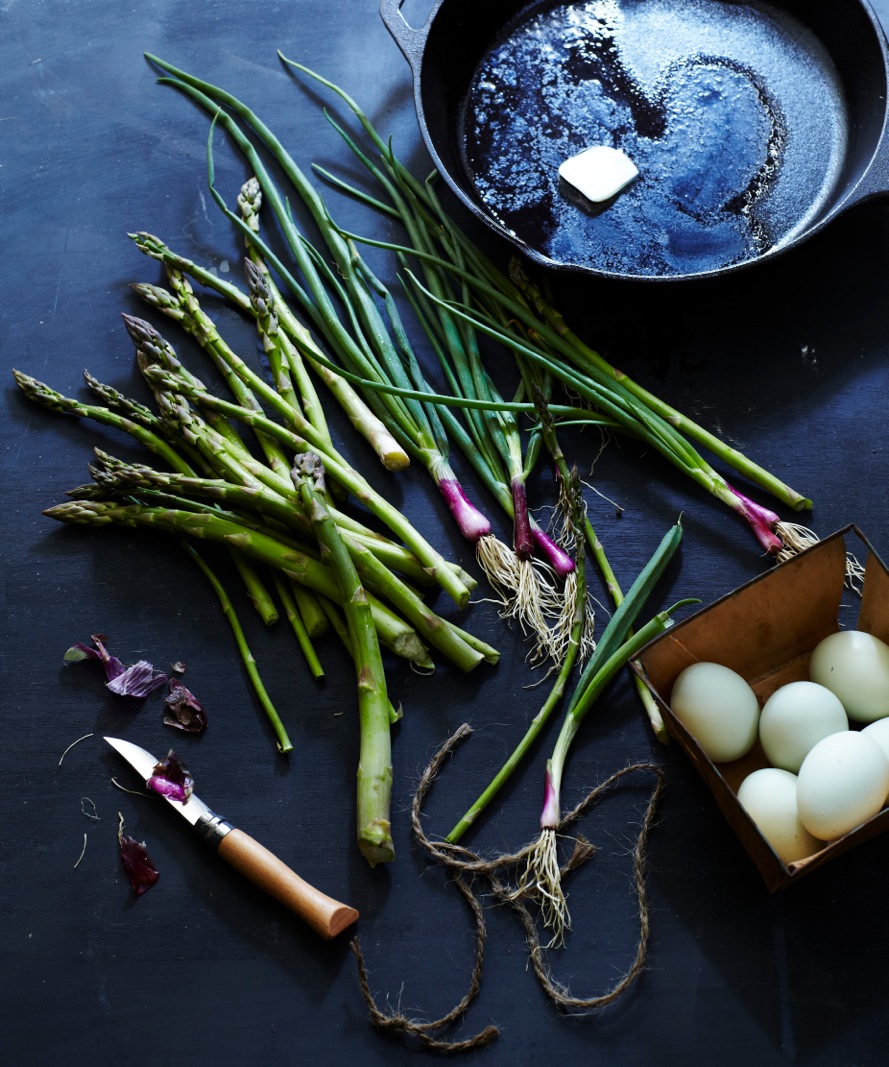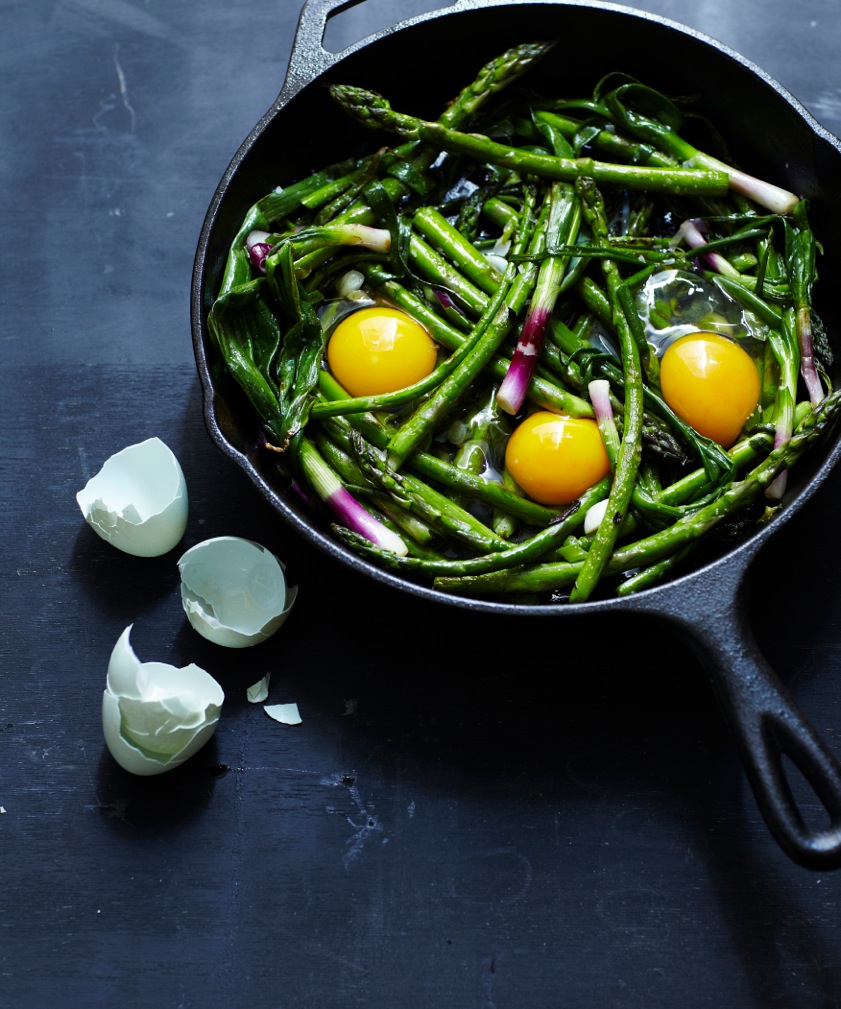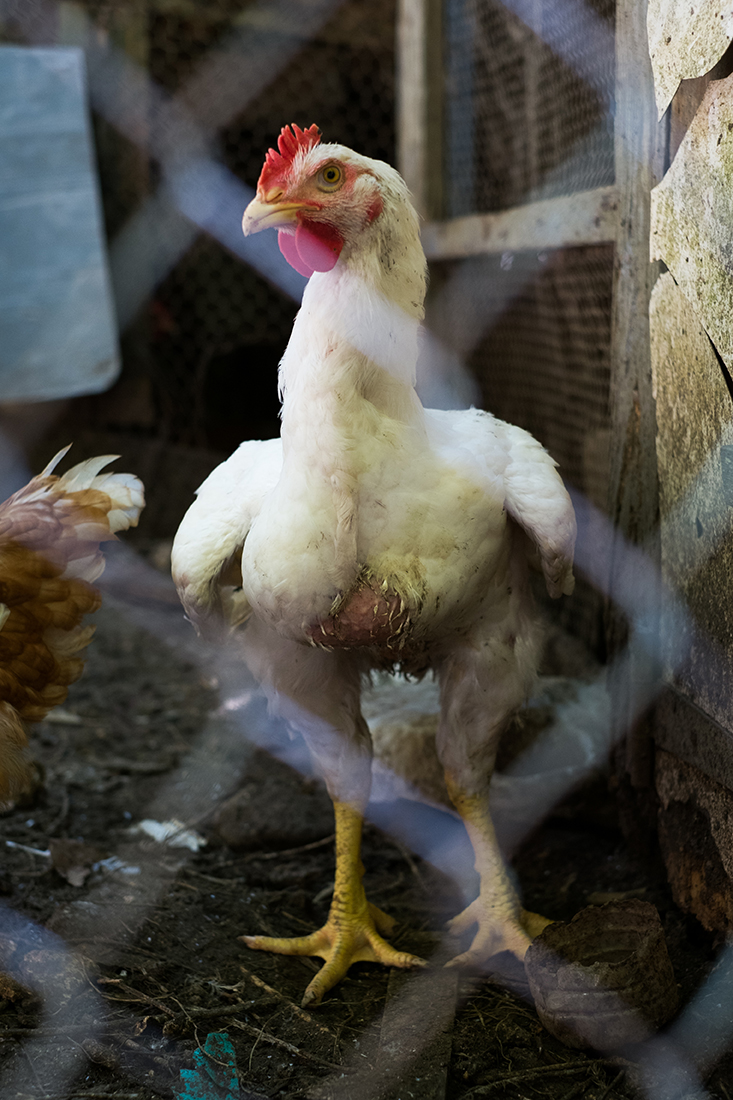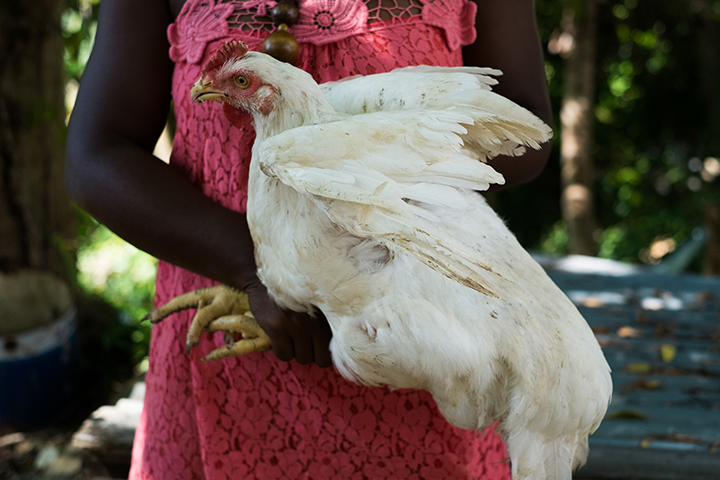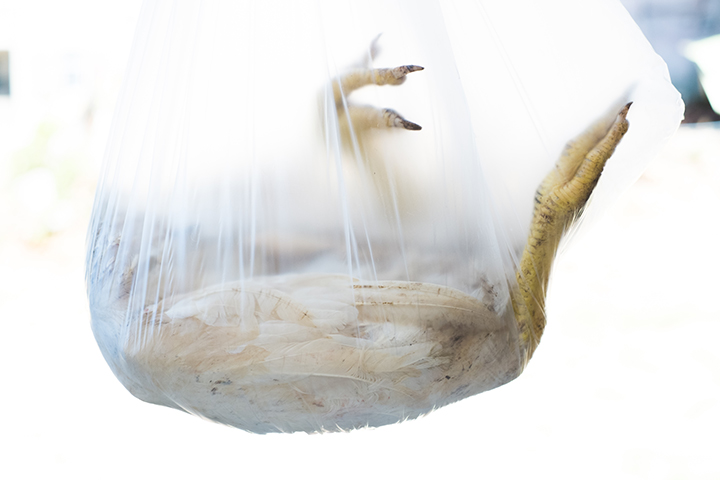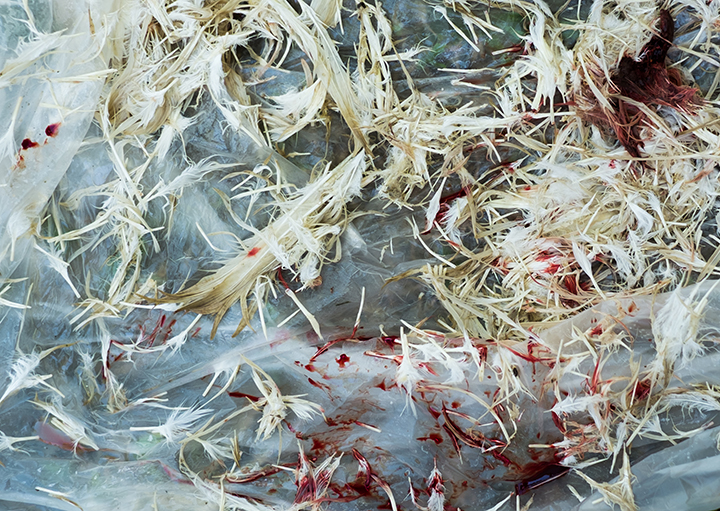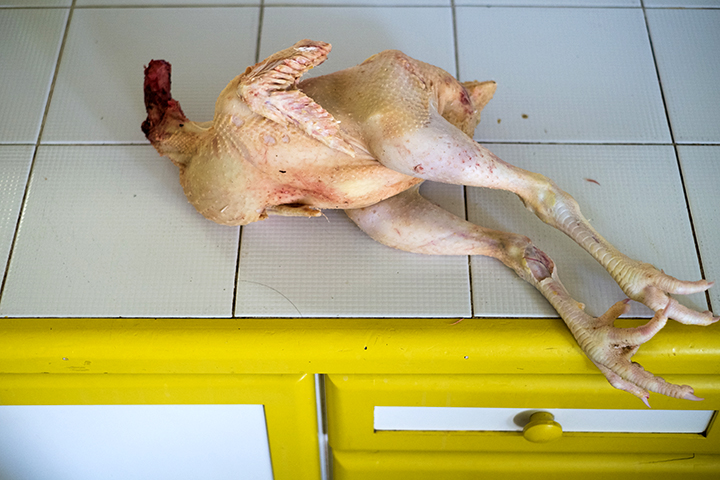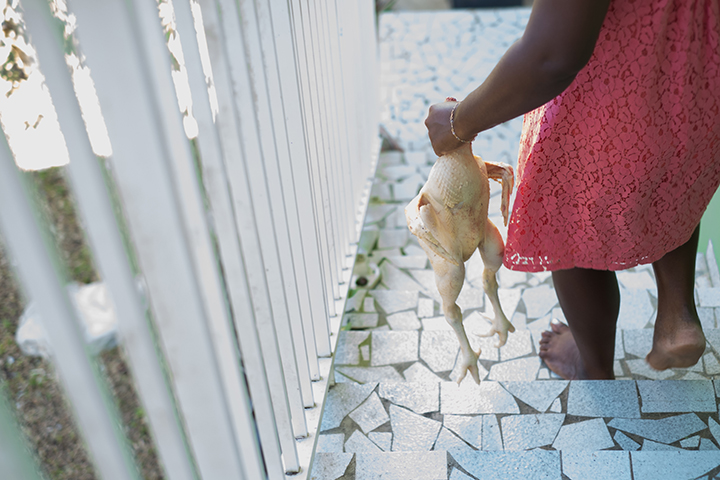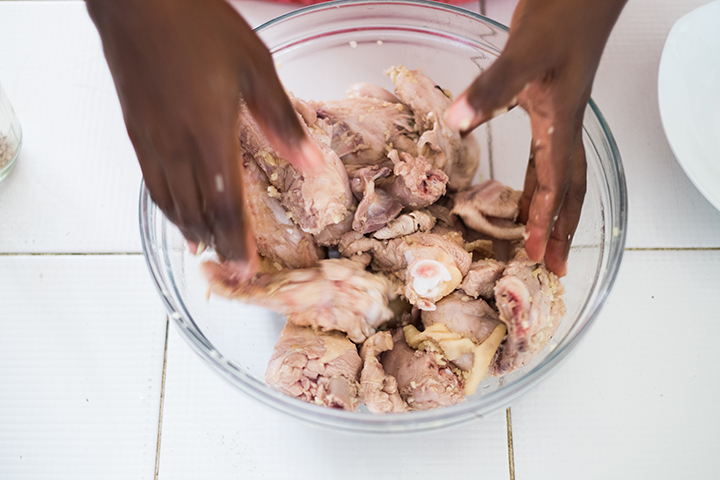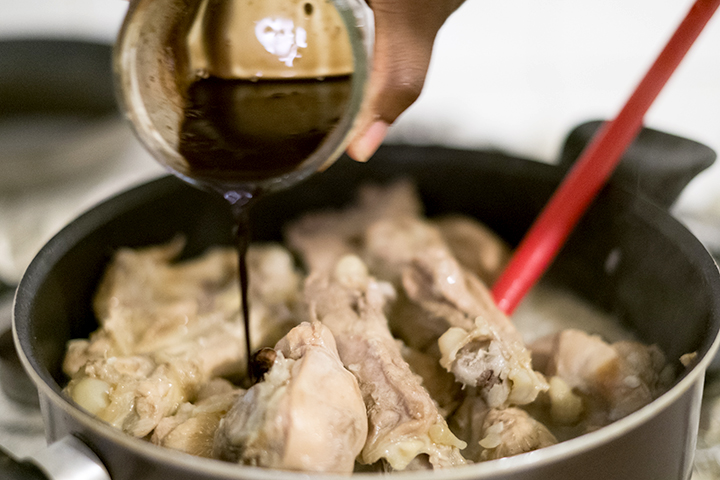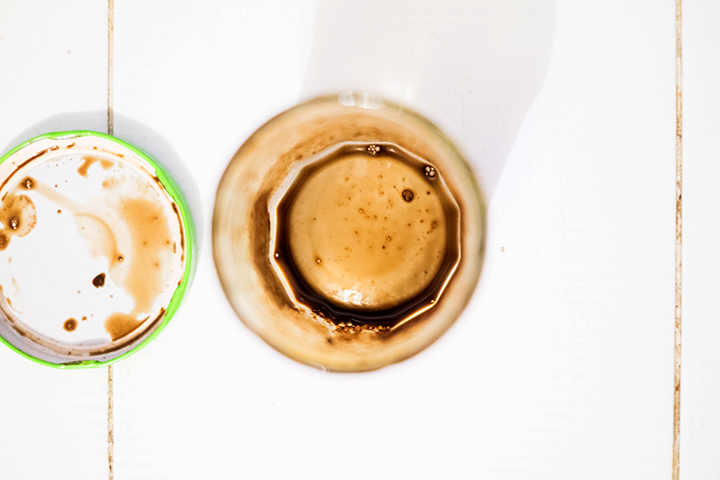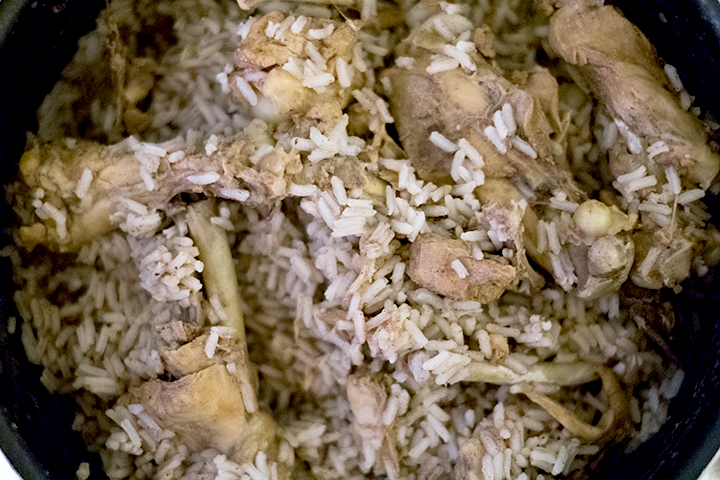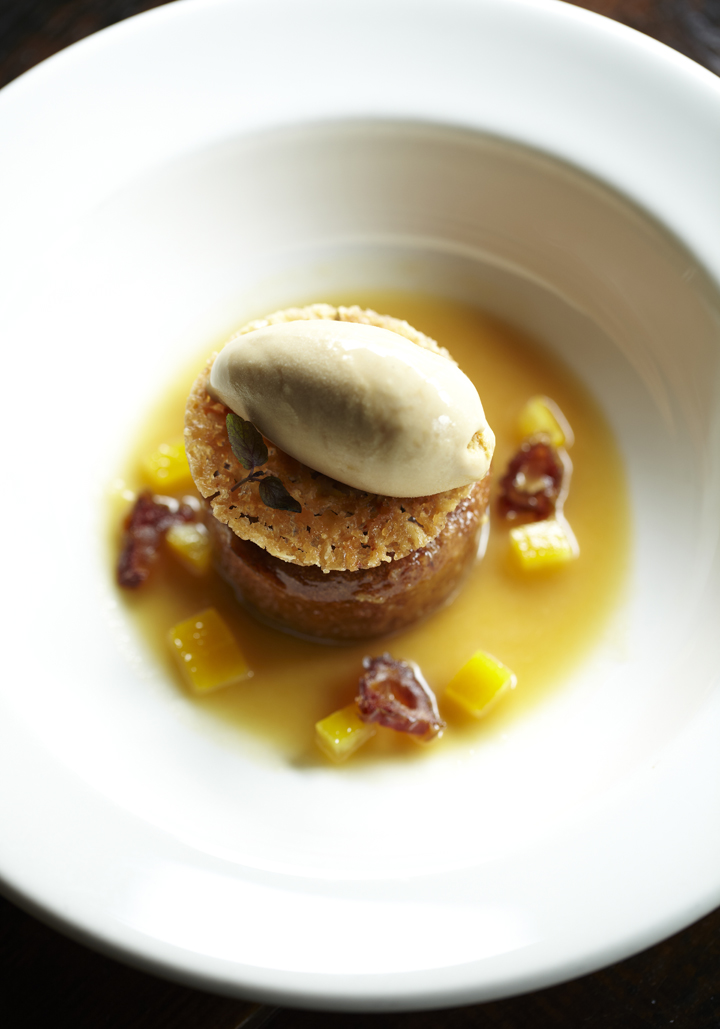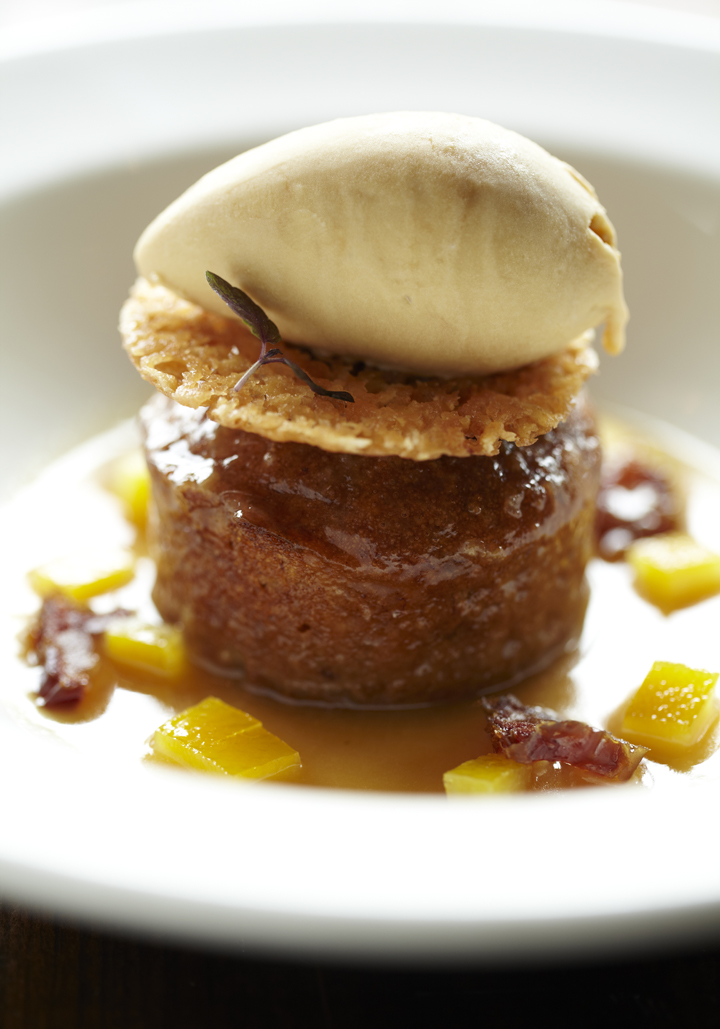New York photographer Linda Pugliese, who has deep Italian roots, also has family in Guadeloupe. When her grandmother left Italy in the 1930's for New York, her sister moved to the south of France and started part of the family there. Her cousin Sebastian, originally from Aux-en-Provence, was recently contracted for work in Guadeloupe (considered the French West Indies, part of France but in the Caribbean, they speak french but the true local language is Creole). Sebastian's wife is Angolan, and on days of celebration she makes this chicken dish called Arroz Cabidela. The dish, originally from Portugal, requires hanging a chicken upside down so the blood may be captured. The blood is then cooked together with the meat and rice which imparts a cinnamon-y and rich tasting flavor to the dish, similar to blood sausage.
---------------------------------
HOW to SLAUGHTER a CHICKEN and make ARROZ CABIDELA
We have to remember, that every time we pick up a chicken breast at the butcher or even a few tightly packed in a styrofoam container at the supermarket, someone has slaughtered a chicken. Linda who was a vegetarian for 8 years felt she needed to understand further animal slaughter in order to really have the right to eat meat; because as she and I agree; its really important to realize what your'e eating. Bottom line: when you eat meat, you're eating an animal, that someone, if not you, at some point, has slaughtered.
---------------------------------
GO!
1. It's best to have 3 people to slaughter the chicken; One to hold the chicken down. One to slice the neck, and the other to capture the blood. Once the blood is finished draining, the chicken will likely stop moving. (From Linda: As we needed to collect the blood, we didn't allow it to run around. The chicken is still alive for a few minutes after you cut its head off, hence the famous expression: 'Running around like a chicken with it's head cut off". Tania held the chicken while my cousin Sandy collected the blood in a jar.)
2. Drain the blood in a jar with finger of white vinegar to sterilize and add flavor.
3. Boil water in a large pot. Dunk the chicken in the hot water to loosen the feathers. Carefully pluck them, slowly but sternly so you don't rip all the skin. It's best to do it one feather at a time.
4. Clean away any dirt from the feet, and the outer layer of yellow skin.
5. Hold the chicken over an open flame to scorch off any remaining hairs.
6. Begin to break down the carcass, beginning at the waste hole (butt hole, if you will, I don't know how to say this nicely). Cut into it going vertically from the bottom to the neck, being careful to avoid cutting the waste bag or piercing any of the inside digestive organs. Remove inedible organs like the intestines (you'll want to keep the stomach, bang it with the knife to loosen the contents, cut it open and clean it out, peel away the outside blue-purple skin —this was my favorite part to eat, very tender, then livers and the heart which I think are more familiar to most). There is a bright green bag that you should discard and take care to avoid puncturing. According to Tania, if you puncture this sac, you will have ruined the whole chicken. Once all the insides are out, it begins to look a lot like a chicken you can find in Chinatown.
7. When breaking down the meat, be sure each piece has bone left on it, to ensure there is the most flavor, even breaking bones if necessary. For example, the breasts she cut in half, leaving the ribs attached.
8. Cover broken down chicken with vinegar, salt and warm water, drain, then cover with cold water.
9. Slice two onions and begin to fry slowly in a large pot. Drain the chicken and pat dry, add a few splashes of vinegar (this is used to disinfect over and over through the process, but also adds flavor). Toss the chicken with salt, white pepper, black pepper, 7 crushed garlic cloves, and a few bay leaves.
10. When the onions begin to soften and brown slightly, add the chicken to the pot. Once browned, cover with water, cover the pot and allow to cook for an hour or so on medium low heat (the water should be simmering, not boiling).
11. remove chicken from cooking liquid, add rice. if you need more water to cook the rice, add it, and season. Once rice is almost cooked (10-15 minutes later) add the chicken back in, stir in the blood and cook slowly until the rice has finished cooking. (From Linda: The blood is pretty crucial to the recipe. It adds a cinnamon flavor and richness to the dish, similar to blood sausage. The meat itself was very tender; we killed the chicken and ate it the same day.)
This rice and chicken dish is usually served with a salad of tomatoes and cucumber.
------------------------------------
LINDA PUGLIESE: is a food photographer and aspiring professional pasta maker. Originally from Annapolis, Maryland, she grew up surrounded by sailboats & picnic tables covered in piles of crabs. Her favorite guilty pleasure, is really good vanilla ice cream with a sprinkle of maldon sea salt on top. She will gladly set an alarm hourly through the night to wake up and stir the ragu in winter and could easily live off yogurt topped with blueberry jam. And some days she does. Click here to check out her work.
